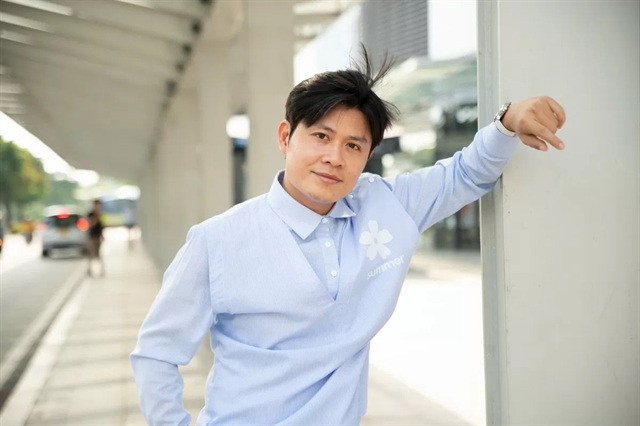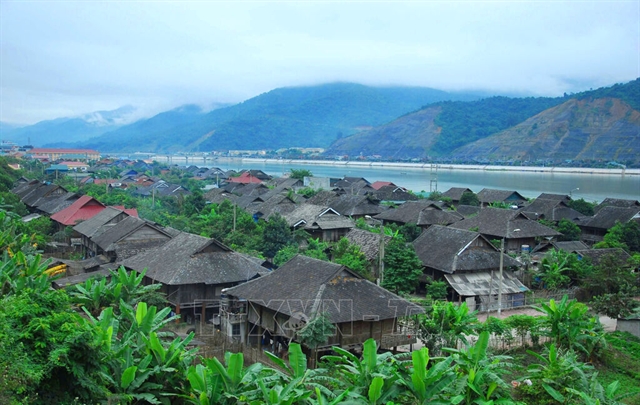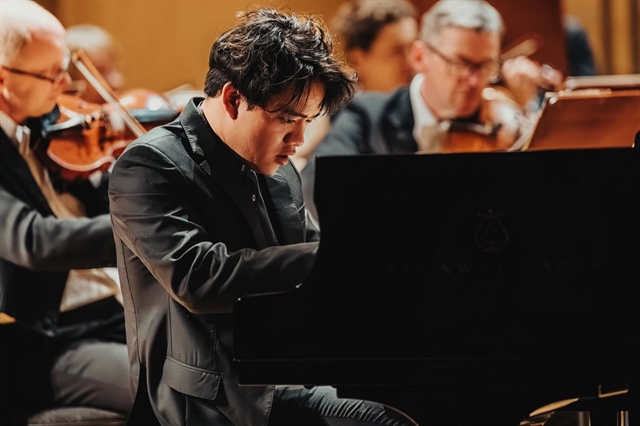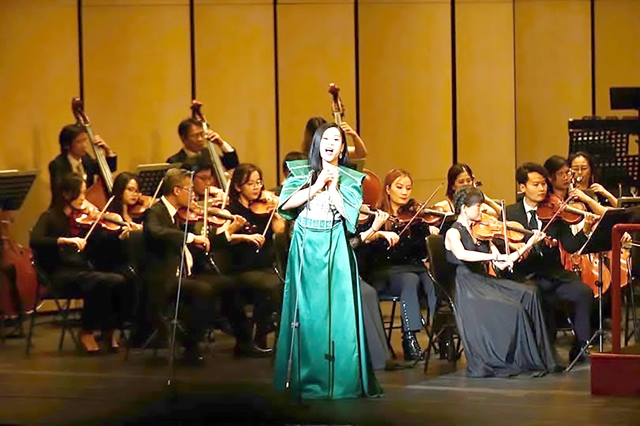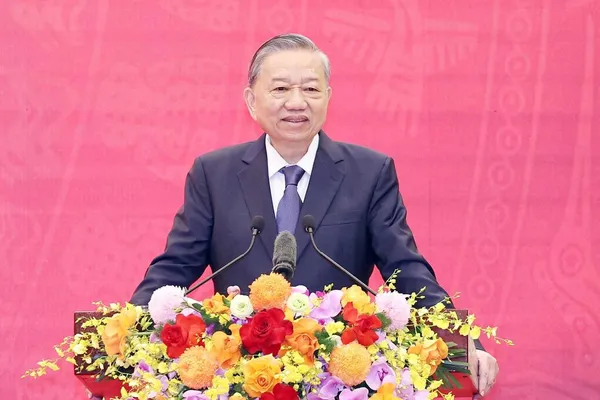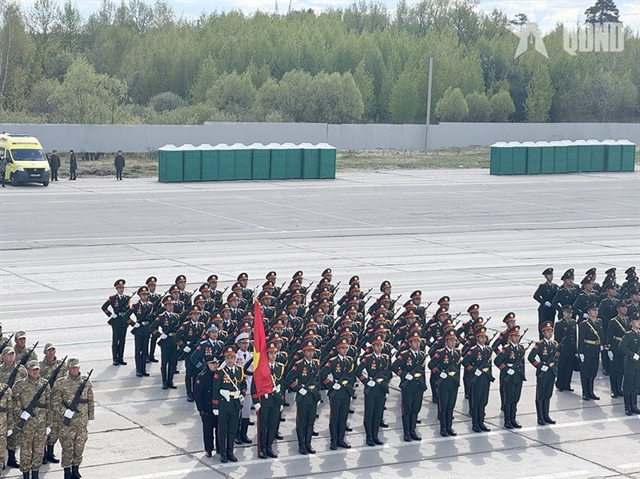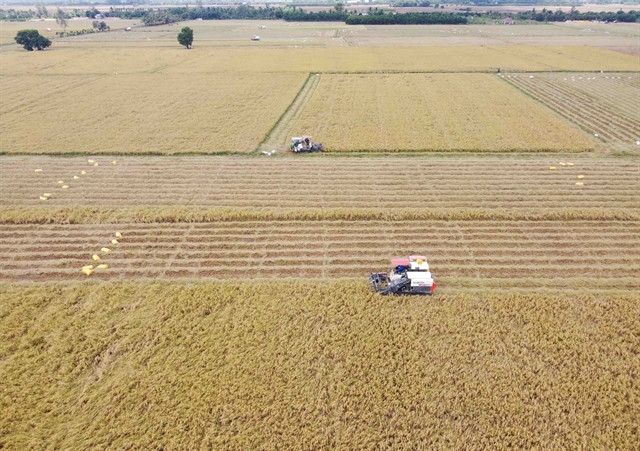 Society
Society
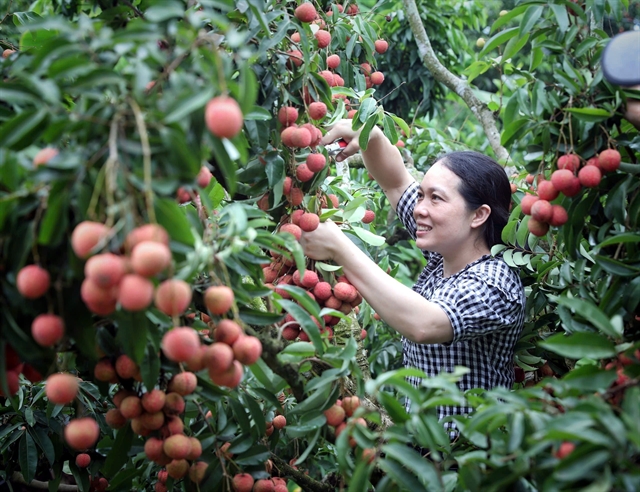
The southern province of An Giang is known for its sacred land, with mysterious stories related to seven mountains, and is home to one of the largest Chăm ethnic communities that worship Islam in the country.
An Giang preserves a rich cultural and spiritual heritage with unique architecture, making it a notable destination for exploring religious tourism.
Among the top sites to visit is the Temple of Bà Chúa Xứ (The Lady of the Realm) located at Châu Đốc City's Sam Mountain, regarded as one of the most sacred temples in the nation.
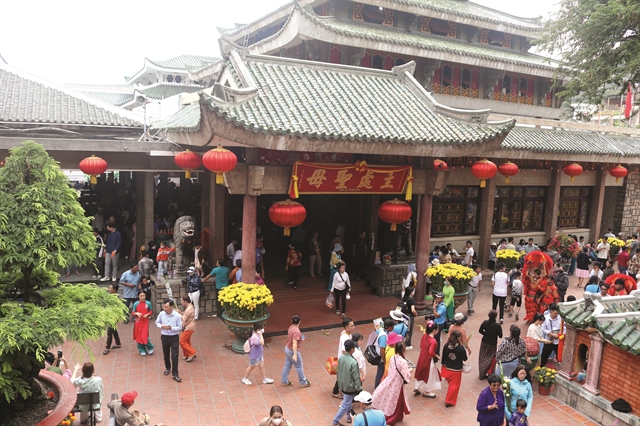 |
| Crowds throng the Temple of Bà Chúa Xứ (Lady of the Realm) to offer gifts and pray for good fortune. VNS Photo |
The temple, originally built in the 19th century, underwent several renovations until 1972, when it was redesigned by architects Huỳnh Kim Mãng and Nguyễn Bá Lăng in an Eastern style, which defines its current architectural form.
While there are numerous theories regarding the origin of the Lady of the Realm, its actual beginnings are still in question.
While many stories and legends surround her, in the south, the Lady of the Realm is revered as a protector of Việt Nam's borders and a source of prosperity and health.
It was recognised as a national monument in 1980, attracting millions of pilgrims each year to offer incense and gifts to the Lady of the Realm, praying for health, peace and success in business.
Visitors can explore the main temple, where the Lady of the Realm's sandstone statue stands and an exhibition room featuring a collection of artefacts related to the Lady of the Realm.
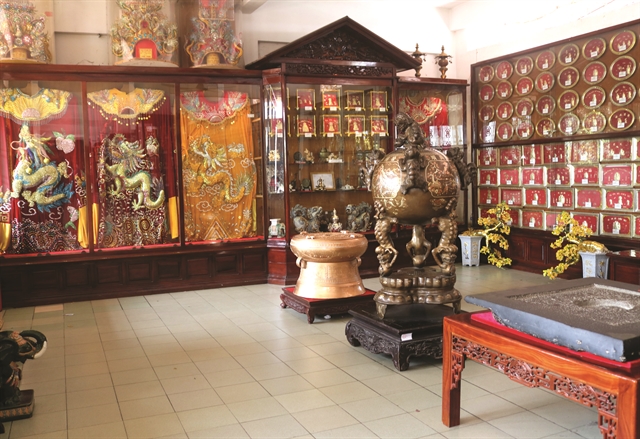 |
| Many artefacts, mostly accessories presumably worn by the Lady of the Realm are displayed. They are offerings presented by pilgrims. – VNS Photo |
The temple's main hall features the 1.48 metre-tall sandstone statue of the Lady of the Realm, wearing a crown and robes, typically made of velvet.
These items are replaced with different colours and shapes monthly by pilgrims as offerings.
In front of the altar where the statue stands is a place for burning incense and space for placing offerings and performing rituals.
Nguyễn Văn Tùng, a visitor from Bến Tre, said he had visited the temple twice.
“It was as crowded as the last time we were here. My family and I brought offerings to present to the Lady of the Realm. We'll go inside the main hall to prepare the offerings, then wait our turn to present them to her," he said.
Moreover, the Lady of Realm Festival is one of the highlights of the country's south.
The event is recognised as a National Intangible Heritage and UNESCO's Intangible Cultural Heritage of Humanity.
It is held annually from the 23rd to the 27th of the fourth lunar month, with key rituals performed, including the washing of the lady's statue and other ceremonial rites.
This festival fosters cultural exchange and strengthens community ties among the province's diverse ethnic groups, while highlighting the important roles of women and the contributions of past generations to the nation's development.
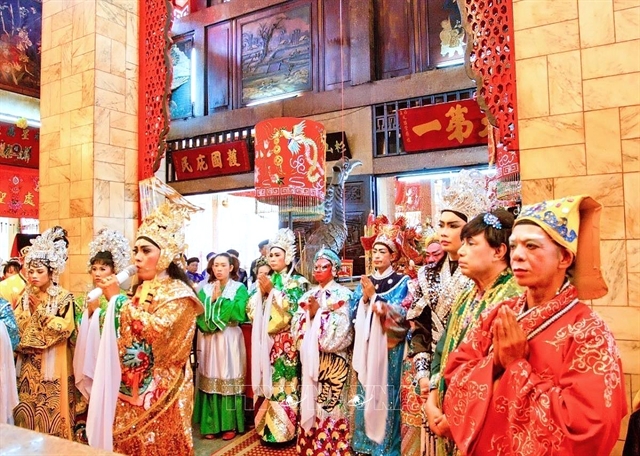 |
| The Bà Chúa Xứ (Lady of the Realm) festival, a national heritage, holds significant cultural, historical and spiritual importance for locals and people nationwide. – VNA/VNS Photo |
The first ritual occurs at midnight on the April 24th of the lunar calendar.
It starts by lighting two candles before the Holy Mother's statue, followed by offerings of incense, wine and tea.
Then, a group of selected women will perform a bathing ritual for the statue with fragrant water infused with jasmine and cinnamon behind a curtain.
The rituals continue from the 25th until the morning of the 26th, with ceremonies such as offering incense and burning votive paper, while praying for good weather and prosperity.
Additionally, the festival includes ceremonies to honour Thoại Ngọc Hầu, a high-ranking mandarin under the Nguyễn Dynasty, who expanded and protected the southwestern border.
The Masjid Mubarak Mosque
An Giang is also home to over 13,000 Chăm ethnic people who practise Islam and boasts some of the oldest mosques in the country.
Among them is Masjid Mubarak Mosque, famous for its rich historical value and structure, which was listed as a national architectural and spiritual heritage site in 1989.
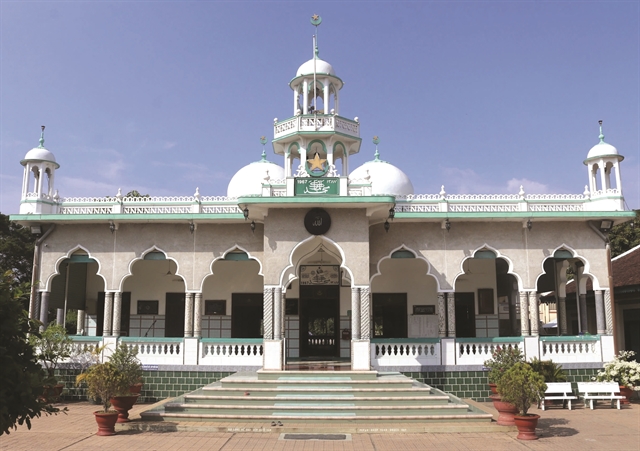 |
| The Masjid Mubarak Mosque in Châu Phong Commune, Châu Đốc City, possesses unique architectural and artistic value, as well as historical significance for the Chăm ethnic community practising Islam in An Giang. – VNS Photo |
Located in Châu Phong Commune, Châu Đốc City, this mosque is where the Chăm community comes together for daily religious practice.
According to the mosque's deputy imam Go Sa Ly, its location was chosen for its proximity to canals, making it easy to access water for religious rituals.
There are three main annual festivals hosted at the mosque following the Islamic calendar, including Maulid (Prophet Muhammad's birthday) on March 12, Roja Haji (Mecca pilgrimage) on December 10, and the Chăm New Year on October 1, which follows the Ramadan fasting month from September 1 to 30.
Mubarak Mosque was initially built in 1750 and has undergone five renovations, the last of which saw Indian architect Mohamet Amin create a design inspired by mosques in Saudi Arabia.
The entrance gate to the mosque is arched, with a large two-tiered tower above it.
The towers have an oval dome with a crescent moon and star at its base, symbolising Islam.
Inside, the mosque has a predominantly white and green colour scheme.
The four corners of the mosque's roof are where four small towers are located, and in the centre of the roof are two prominent rounded domes.
The walls are decorated with patterns and Chăm script from the Quran, and the large prayer hall is supported by eight pillars.
In addition, the mosque also houses a school for children to study Chăm script and the Quran, areas for ritual ablutions, and a communal gathering space.
Visitors are welcome to tour and photograph all mosque areas but must observe certain religious customs.
“It's truly amazing to see such beautiful architecture. The people here are very friendly and helpful, readily guiding me about the architecture and sharing stories about the community,” said Nguyễn Thanh Phú, a visitor from Bạc Liêu on a trip to the Chăm brocade weaving villages in An Giang.
Popular tourism spot
With its beautiful landscapes, plenty of eco-tourism sites, cultural heritage and rich cuisine, An Giang Province is a popular tourism magnet.
In 2024, it welcomed around 9.1 million tourists, up 7 per cent compared to 2023. Tourism revenue also rose 73.7 per cent to VNĐ10.2 trillion.
During the recent Lunar New Year holiday, the province organised a wide variety of festive activities, including musical performances, a firework show, and exhibitions for cultural heritage and national treasures, attracting over 770,000 visitors.
Popular destinations such as the Trà Sư Cajuput Forest eco-tourism site, the Temple of Bà Chúa Xứ, and the Cấm Mountain tourism site were crowded with visitors, all eager to appreciate the province's natural and spiritual beauty.
Much like any other locality in Việt Nam, An Giang has been focusing on tourism development and creating new tourism products to entice travellers.
According to the provincial Department of Culture, Sport and Tourism, local tourism sites have proactively invested in renovating and improving themselves to prepare for New Year season, all while ensuring clean environments, food safety and public security.
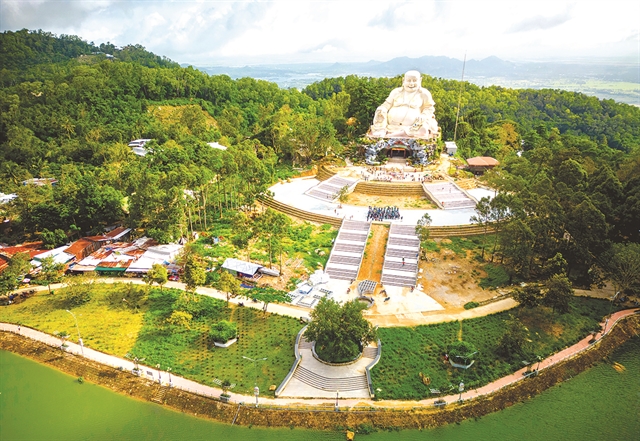 |
| An Giang is a magnet of spiritual tourism nationwide, with support from local authorities. – Photo baoangiang.com.vn |
An Giang will continue to develop its tourism products and services by training high quality tourism staff, co-operating with HCM City and other Mekong Delta provinces for joint activities, and leveraging its tourism potential. VNS

